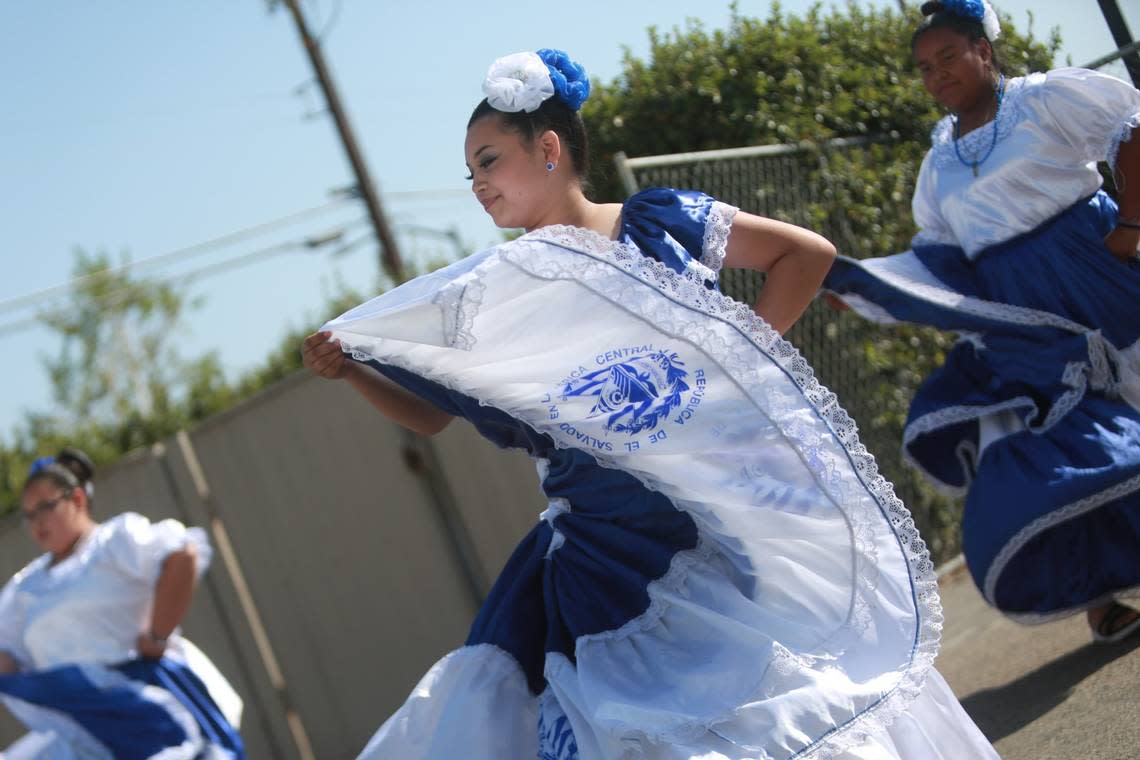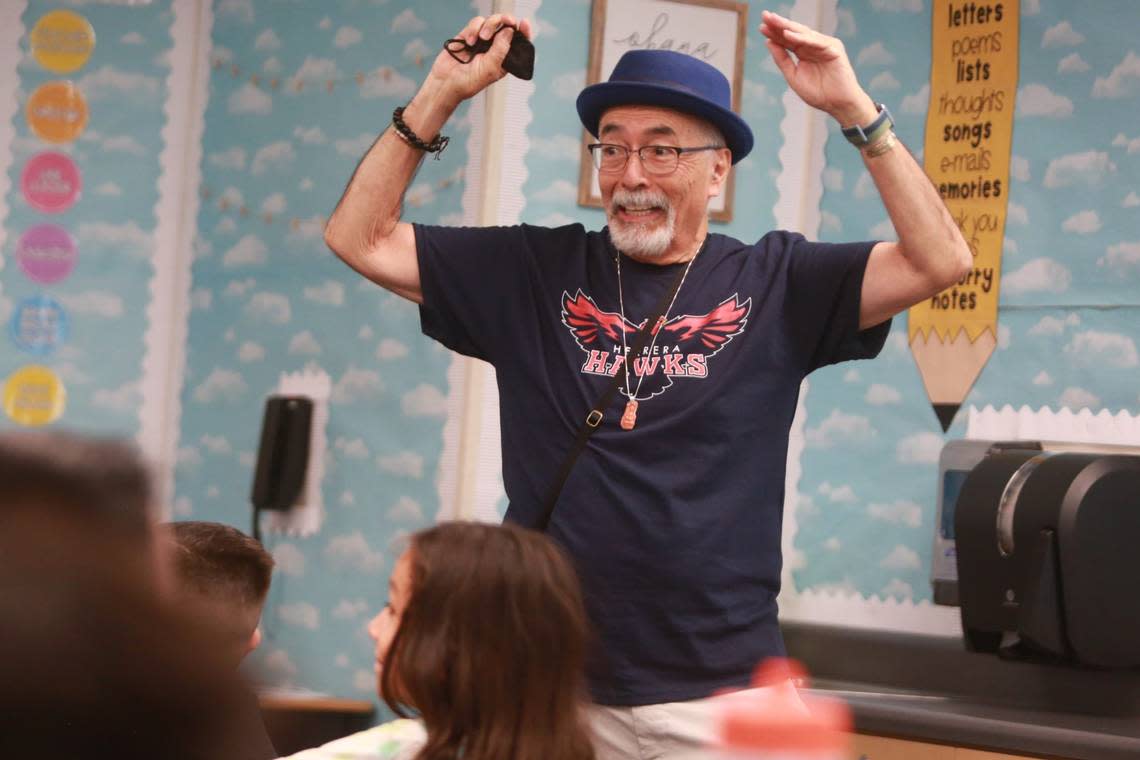The year threw us some curves, but we managed to survive and thrive
Put on your seat belts while we whisk you through a 2022 when face masks finally came off despite the coronavirus clinging on, when elections delivered good or bad news depending on your political leaning, the drought refused to disappear, a teen invaded a Texas elementary school and killed 21 (two teachers, 19 students), and the great mariachi director Rubén Fuentes died.
Bad Bunny dominated the music world, and even appeared in a movie (‘Bullet Train’). Leonel Messi made sure Argentina captured that elusive World Cup, farmworkers weathered the summer heat on a Delano-to-Sacramento march to push for the governor’s John Hancock on voting legislation, and Hanford native Leo González became a social media sensation.
Russia invaded Ukraine, Perú thwarted a presidential takeover of Congress, the first Mexican woman (Katya Echazarreta) flew into outer space, and the world’s richest man purchased Twitter.
Everyone got a year older, probably traveled more than in the previous two years, and itched for a return to normal.
Vida en el Valle takes a look at the 10 happenings in 2022 that defined the world for Latinos in the San Joaquín Valley.

Not a total victory against COVID
Gov. Gavin Newsom lifted the statewide face mask mandate in indoor public places on Feb. 16, and it appeared the public was ready for a return to a pre-pandemic lifestyle of going into restaurants, enjoying concerts, and basking in large-scale graduation ceremonies that were no longer virtual.
The economy opened up, but some businesses (especially restaurants) had a difficult time filling jobs due to pandemic support payments from the state and federal governments that made work less appealing to some.
The coronavirus did not disappear, as COVID cases continued to infect residents. Hospitals kept a strict limit on visitors, and some businesses never quite recovered from the pandemic’s wrath.
California has recorded more than 100,000 deaths linked to COVID-19.
Dr. Rais Vohra, Fresno County interim health officer (The Fresno Bee): “Honestly, I don’t think we’re going to see a huge change in people’s habits. I think people have made up their minds about how they want to practice their daily activities.”
Little water, plenty of impact
California entered its third year of a drought that forced farmers to either fallow land or switch to less-thirsty crops. State officials predicted almost 9,000 farmworker jobs were lost in 2021 because of the three-year drought, but that did little to slow down agriculture’s economic impact in the Valley.
According to a Fresnoland report, UC Berkeley economics estimate the Central Valley will see nearly 1 million acres of farmland fallowed over the next two to three decades. That will result in 42,000 ag-related farm jobs.
In February, the federal Bureau of Reclamation, which manages the Central Valley Project, announced a zero-water allocation for irrigation districts that provide water for farmers in the Central Valley.
The drought didn’t keep ag from posting healthy economic numbers. Kern County took over as the king of ag with crops valued at $8.34 billion, displacing Fresno County with its $8.085 billion. Tulare County was second at $8.089 billion.
Don Cameron, Terranova Ranch/state Board of Food and Agriculture (PPIC): “Farmers are going to be the solution, not just for water but for climate change.”
Farmworker Union’s march through California’s Central Valley
The United Farm Workers held a 24-day march to persuade Gov. Gavin Newsom to sign AB 2183, which would allow farmworkers to vote for union representation from their own home without fear of intimidation from foremen, supervisors or labor contractors.
Their 335-mile march to Sacramento started on Aug. 3 with the famous words “Sí Se Puede,” when 250 marchers left the historic Forty Acres through 23 mostly rural communities. Stops included Fresno and Modesto.
The march was led by UFW President Teresa Romero with supportes and leaders such Civil rights icon Dolores Huerta as well as catholic leaders joining the march at different points.
A day prior to the culmination of the march, Newsom’s office released a statement saying he did not support the UFW-backed bill in its current form, although he was open to negotiation. The governor vetoed a similar bill last year.
The United Farm Workers also slept outside state offices in Fresno and across California to pressure Gov. Gavin Newsom to sign a farmworker voting rights bill.
Fresno Diocese Bishop Joseph V. Brennan (Vida en el Valle interview): “Governor, we want to make the lives of our farmworkers even easier. They’re in the fields, they’re working in this heat all the time. They are providing, they really are. They’re putting food on our table that wouldn’t be here.”
Political gains, losses for Latinos
Redistricting created four Latino-majority Congressional districts north of Los Ángeles, creating hope that a Latino from that region would finally get elected to Congress. However, Assemblymember Rudy Salas lost his bid against Republican incumbent David Valadao in the 22nd District, while Democrats Jim Costa (21st), Josh Harder (9th) and Zoe Lofgren (18th) won in the other Latino-majority districts.
However, the news wasn’t that gloomy for other Latinos. Former Fresno City Councilmember Esmeralda Soria won the 27th Assembly race, while state Sens. Anna Caballero (14th District) and Melissa Hurtado (16th District) were joined by newcomer Marie Alvarado-Gil (4th District) to give the Valley four Latina lawmakers in Sacramento.
Also, Tulare County Supervisor Eddie Valero became the first Latino on that body to win re-election; and, Self Help Enterprises worker Emmanuel Soto became only the second-ever Latino to be elected to the Visalia City Council.
One era is coming to an end: Orange Cove Mayor Víctor López, who was first elected to public office in 1978, lost his re-election bid.
Assemblymember Esmeralda Soria: “I am dedicated to having an open door, and I will work with anyone from any party or background to deliver for our Valley.”
CSU chancellor Joseph I. Castro’s saga
Joseph I. Castro “made it” by becoming the first Mexican American to lead the nation’s largest higher education institution. He was the first Latino – and first native of the San Joaquín Valley born in Hanford – to become president at Fresno State.
As CSU Chancellor, Castro resigned from his $625,000 job in February following a public and media outcry over his handling of sexual harassment allegations lodged against Frank Lamas, his former vice president of student affairs at Fresno State.
USA Today reported on how not only Castro but the CSU system failed to handle the sexual harassment complaints made by students and staff against Lamas.
Castro explained that he followed CSU policy by taken the steps necessaries to ensure Lamas could never work on a CSU campus.
Former CSU Chancellor Joseph I. Castro (The CSU chancellor’s office): “While I disagree with many aspects of recent media reports and the ensuing commentary, it has become clear to me that resigning at this time is necessary so that the CSU can maintain its focus squarely on its educational mission and the impactful work yet to be done.”
Frozen Mexican food magnate donates $15 million
The business began in 1964 in Tulare with the father convincing his son, then in junior college, to help him start a frozen Mexican food business using his wife’s recipes. The father would often go to junkyards looking for machine parts he could mold into an operation making burritos.
That is how Louie and Fred Ruiz began Ruiz Food Products, the makers of El Monterrey frozen Mexican food. The company also makes chimichangas, breakfast burritos, tamales and the taquitos you can spot at convenience stores.
All those burritos and other products will generate $1 billion in sales this year, according to Fred Ruiz at a UC Merced commencement in May.
A few months later, Ruiz and his wife, Mitzie, announced a $15 million donation to UC Merced to help the university educate more Valley residents for jobs that help transform agriculture and other industries in the Valley.
In return, UC Merced will name its administrative building in their name.
Fred Ruiz (Vida en el Valle interview): “I’ve been very fortunate to have made money, you know, with my businesses and with my other investments and whatnot. But, from the beginning with Ruiz Foods, I learned that making a difference in people’s lives is probably about the best thing I could do.”
From sleeping on the floor to a federal judgeship
Federal Judge Ana de Alba grew up in South Dos Palos with a farmworker family so poor that she slept on the floor until she got her own bed when she was 16 years old.
One childhood memory is about a crew of six women who picked cucumbers an entire summer without getting paid. When they asked for their pay, the answer was always “Next week. Next week.”
Next week never came.
They never got reimbursed so they could pay for childcare and transportation for the 90-mile daily roundtrip to and from the fields. One of those women decided to take action by contacting an attorney who told her to go to the Labor Commissioner. But, that would mean a 60-mile trip to Fresno with no public transportation available. None of the women ever saw their money.
The woman who contacted a lawyer was de Alba’s mother.
This year, the U.S. Senate confirmed de Alba to become the first Latina on the U.S. District Court for the Eastern District of California. She was nominated by President Biden.
Another judge making news was Patricia Guerrero, the first Latina on the California Supreme Court. She will be the first Latina to serve as Chief Justice after being nominated for that position by Gov. Gavin Newsom when she takes the post in January.
Federal judge Ana de Alba, in a guest blog for OneJustice: “I promised that little girl who heard her mother crying inconsolably in the bathroom that I would return to the Valley as an attorney. I would find a way to make the legal system more accessible so that justice would really be a ‘right for all.’”

Salvadorans commemorate 201 years of independence in Fresno
Salvadorans from the Central Valley celebrated their country’s Independence Day for the first time at the General Consulate of El Salvador in Fresno with music, dance, typical food, including pupusas and curtido and of course the Salvadoran diaspora.
The consulate of El Salvador in Fresno opened its doors in early June to serve the Salvadoran community in the counties of Fresno, Mono, Mariposa, Merced, San Benito, Monterrey, Madera, King, Tulare, Inyo, San Luis Obispo, and Kern.
Although the exact calculation of the Salvadoran population in the Valley is very difficult, Jason Manuel Castro Olivares, consul general of El Salvador in Fresno, said that, in his jurisdiction, which is the San Joaquin Valley, they have calculated a population of 35,000 Salvadorans with the largest populations in Mendota, Fresno, Salinas, Sanger and Bakersfield.
El Salvador has four consulates in California, including Los Angeles, San Francisco, San Bernardino and now Fresno.
Jason Manuel Castro Olivares, consul general of El Salvador in Fresno said (Vida en el Valle interview): “Very proud to be representing the Government of Salvador and to be present at the first celebration here in the Valley of the independence of Salvador. And for all Salvadorans it is a very special date, we are proud of our country, very small but it is always in our hearts. Especially for those of us who are here outside of El Salvador, for many reasons we have to be outside of our country and we always remember it.”
The US’s largest Catholic parish will be opening in California
The work is almost completed on the new $21 million St. Charles Borromeo Church in Visalia. The historic building will be the largest Catholic parish church in North America seating 3,200 souls.
In comparison, St. Peter’s Catholic Church in Lemoore is currently the largest parish church in the Fresno Diocese with accommodation for 1,500 parishioners. St. Stanislaus Catholic Church, in Modesto and part of the Diocese of Stockton, holds 1,326 people.
St. Charles Borromeo will be the new parish church of The Good Shepherd Catholic Parish in Visalia, which consolidates different parishes and includes four worship sites.
The Roman Catholic Diocese of Fresno, which stretches more than 200 miles from Atwater in the north to Frazier Park in the south, announced the new consecration date for San Carlos Borromeo Church for February 2, 2023.
Then Father Eric Swearingen, in conjunction with Bishop Armando Ochoa, held a groundbreaking ceremony for St. Charles Borromeo in October 2019.
St. Charles Borromeo sits on 17 acres on the southwest corner of Caldwell Avenue and Akers Street on Megachurch Alley. The First Baptist Church is the neighbor to the west. North is Methodist Church; and, kitty corner are the Jehovah’s Witnesses.
St. Charles Borromeo will have a columbarium, a resting place for urns of ashes. Cremated remains will be laid to rest on the campus. The first phase will have 1,100 niches, and officials believe those will sell out quickly once they go on presale in November of December.
St. Charles Borromeo Church Pastor Fr. Alex Chávez (Vida en el Valle): “Little did we know that five months after, right, March 2020, that we would be completely shut down. And so, the challenges of building the largest parish church in North America became real at a different magnitude.”

From being spank on his first day of school to U.S. poet laureate to having a school name after him
Latino poet Juan Felipe Herrera has a five-word “magic message” for all students: ‘You have a beautiful voice.”
The U.S. Poet Laureate emeritus wants the students to take the message to heart, and to believe it is true. That’s because his elementary school experience was not so positive – he got spanked by his first-grade teacher in front of the classroom.
Herrera was complimented by his third-grade teacher for his “beautiful voice” planting that seed that his voice mattered. That teacher attended his poet laureate ceremony decades later.
Herrera, who was born in Fowler, has been passing on that message as he became a poet, writer, teacher and activist.
Earlier this year Herrera reminisced with Vida en el Valle about his elementary school escapades, having a school named after him, his hopes for the future students attending Juan Felipe Herrera Elementary school, and other life issues.
The $37.6 million school in the Fresno Unified School District is named after Herrera, the son of migrant farmworkers and former Fresno State professor, opened its door to students on Aug. 15.
The two-story, 84,242-square-foot school features 36 classrooms, four soccer fields, outdoor play courts, student gardens, open courtyards, snack bar with restrooms and a new school-based clinic. It is located on 17 acres south of Church Avenue between Peach and Willow avenues.
The home of the Hawks focusses on S.T.E.A.M., where teachers will use science, technology, engineering, and the arts as they teach math and English Language Arts.
Latino poet Juan Felipe Herrera (Vida en el Valle): “So, I hope they find a love for learning and for themselves like me. You know that they have a beautiful voice, and they begin to be happy about who they are, and they get excited about going to class and they get curious about what they’re learning, and they love their little plot. Each class is going to have a little garden, that they get excited about the garden and about the earth. And that they get excited about outer space of all things. So about themselves, about each other, about their class, about what they’re learning about the Earth, and about that larger thing called the universe.”
